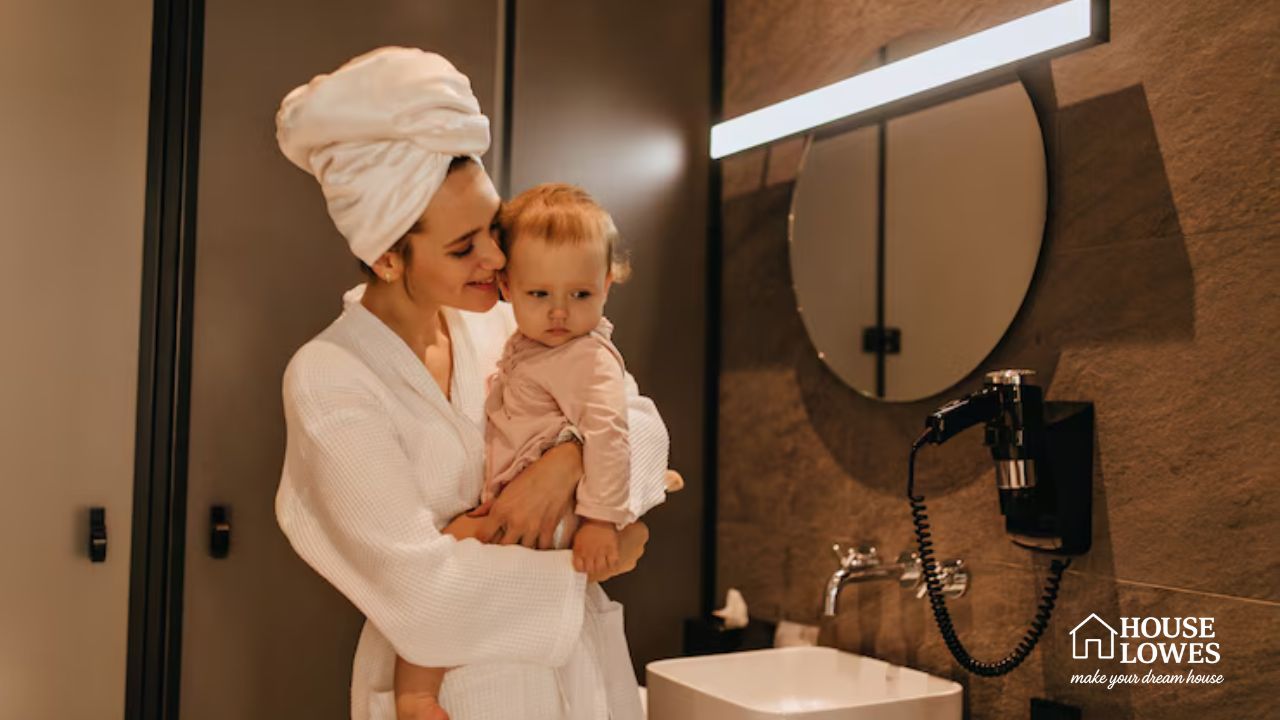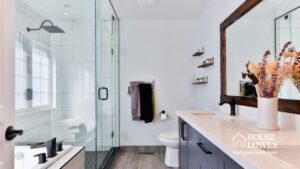Designing a bathroom that works well for the entire family requires a thoughtful blend of function, comfort, and safety. From toddlers to teens—and even adults—everyone uses the space differently. That’s why creating a bathroom that caters to all ages is essential. With the right layout, materials, and features, your bathroom can become a practical and welcoming place for daily routines.
1. Prioritize Safety
Safety should always come first in a family bathroom. Wet floors, hard edges, and fluctuating water temperatures can be hazardous, particularly for children and elderly family members. Installing slip-resistant flooring—like textured tiles or safety vinyl—helps reduce the risk of falls. Add non-slip mats inside and outside the tub or shower for extra peace of mind.
To avoid scalding, consider adding an anti-scald valve or a thermostatic mixer to your taps and shower. Rounded vanity edges, padded toilet seats, and soft-close lids can also prevent injuries and keep the bathroom quieter and more comfortable.
2. Smart Storage Solutions
With multiple people using the same bathroom, clutter can quickly build up. That’s why effective storage is a must. Use a combination of open shelves and closed cabinets to manage everything from towels and toiletries to bath toys and grooming tools. Under-sink cabinets, wall-mounted shelves, and drawer organizers all help keep items in their place.
Vertical storage like tall cabinets can save floor space while maximizing room for supplies. You can even assign each family member their own basket or drawer to help everyone stay organized.
3. Designed for Sharing
A family bathroom should be efficient enough for more than one person to use it at the same time. A double-sink vanity makes it easier for siblings or parents and children to get ready together. If possible, separate the toilet into its own small, enclosed area so that it can be used privately while others access the sink or shower.
A shower-tub combo is also a great solution for shared use. It meets the needs of both young children—who benefit from a bathtub—and adults, who may prefer a quick shower. A handheld showerhead makes rinsing off kids or cleaning the tub more convenient.
4. Kid-Friendly Touches
Making the bathroom accessible for younger children can foster independence. Add a sturdy step stool so they can reach the sink and install towel hooks or bars at their height. Soft-close toilet seats prevent loud noises and pinched fingers, while fun, themed accessories like colorful shower curtains or decals can make the bathroom more appealing for kids.
These playful touches can be easily updated as children grow, keeping the space age-appropriate and fresh.
5. Easy Maintenance
Because family bathrooms see heavy use, cleaning should be as hassle-free as possible. Choose materials that stand up to daily wear and are simple to wipe down. For example, quartz countertops and solid surfaces are both stain-resistant and low maintenance. Larger tiles reduce the amount of grout, helping to minimize mold and mildew buildup.
Fixtures with sleek finishes and fewer crevices also save time when cleaning. Wall-mounted vanities and toilets are especially useful for keeping floors clear and easy to mop.
6. Good Lighting Matters
Don’t underestimate the impact of lighting. A well-lit bathroom makes everything from brushing teeth to applying makeup easier. Use bright, even lighting at the vanity for daily tasks, and consider adding soft, dimmable lights or a nightlight for younger kids who use the bathroom at night.
A family-friendly bathroom should support the daily needs of all household members while staying safe, clean, and comfortable. By focusing on smart design choices—like ample storage, shared functionality, and kid-safe features—you can create a space that grows with your family and makes everyday life just a little bit easier.







